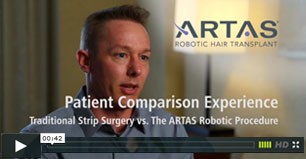Comprehensive Hair Loss Disorder Treatments: A Brief Guide
Written by Dr. Griffin
Hair loss—a condition that afflicts millions of people around the world—can take a toll not only on one’s appearance, but also on their self-esteem. Many factors, including genes, hormones, medical conditions, and even medications, contribute to this problem. Happily, there is a wide range of advanced hair loss disorder treatments available in Philadelphia.
From surgical procedures to non-surgical therapies, let’s delve into some of the solutions that Griffin Hair Restoration Center offers to help restore your hair and confidence.
Understanding Hair Loss Disorder and Its Types
Generally, it’s normal to shed 50 to 100 hairs each day. However, when hair loss is greater than this and results in thinning or bald spots, the problem is referred to as a hair loss disorder. Common forms of this disorder include:
- Androgenetic alopecia: Also known as male or female pattern baldness, it’s characterized by a genetics-based receding hairline and gradual disappearance of hair from the crown and frontal scalp.
- Telogen effluvium: Typically temporary hair loss can happen after pregnancy, major surgery, or severe stress.
- Alopecia areata: This autoimmune disorder often results in unpredictable hair loss.
Surgical Hair Loss Disorder Treatment
Hair Transplant Surgery
One of the most common surgical treatments for hair loss is hair transplant surgery. This procedure involves taking hair from denser growing region, such as the back or sides of the scalp, and transplanting it into thinning or balding areas. There are two main types of hair transplant surgery:
- Follicular Unit Transplantation (FUT): This involves removing a strip of scalp from the back of the head and extracting individual follicular units.
- Follicular Unit Extraction (FUE): This involves removing individual follicular units directly from the scalp.
Both FUT and FUE result in natural-looking and long lasting solutions for hair loss. But the selection largely depends on the individual’s hair loss intensity, quality and quantity of donor hair, lifestyle, and length of hair. FUE is preferred in a large majority of patients because it is less painful and does not leave a noticeable scar in the donor area.
Non-Surgical Hair Loss Disorder Treatment
Topical Treatments
Over-the-counter topical treatments like Minoxidil are easily accessible and are one of the first lines of defense against hair loss. This FDA-approved medication works by prolonging the growth phase of hair.
Prescription Medication
Finasteride is a prescription medication taken orally. It works by blocking the hormone associated with male pattern baldness, slowing hair loss and even promoting new growth.
Low-Level Laser Therapy
Low-Level Laser Therapy (LLLT) uses low levels of light to target hair follicles and stimulate regeneration. This non-invasive therapy is often a suitable option for those who do not wish to or cannot undergo surgery.
Platelet-Rich Plasma (PRP)
PRP therapy uses patients’ own platelet-rich plasma to stimulate weakening hair follicles. This treatment has shown promising results in terms of increasing thickness and improving the quality of hair.
Understanding the right treatment for your specific hair loss disorder can be a challenging task. That’s why our qualified and experienced professionals at Griffin Hair Restoration Center are here to guide you through this journey, offering professional advice and efficient service.
If you are experiencing hair loss and seeking treatment, explore our wide range of surgical and non-surgical solutions at Griffin Hair Restoration Center. Contact us today to schedule a consultation and learn how our personalized hair loss disorder treatment plans can help restore not just your hair, but your confidence too. Let’s work together to uncover the best, most efficient solution for your hair loss.

